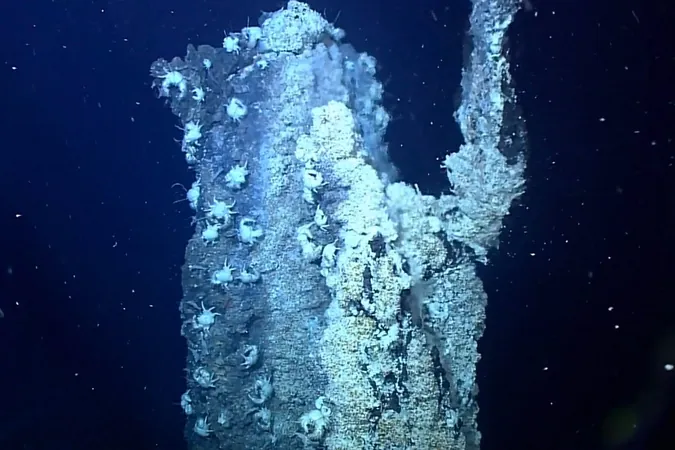
Remarkable Discovery: Underwater Robot Uncovers Stunning Survival Secrets of Toxic Vent Worms
2025-08-29
Author: Arjun
Deep in the Pacific: A Toxic Wonderland
In the murky depths of the Pacific Ocean, hydrothermal vents unleash scalding water and lethal substances, creating an environment where very few creatures can survive. Yet, one extraordinary species has not just managed to endure - it thrives!
The Incredible Paradox of Paralvinella hessleri
On a recent expedition, scientists ventured into this hostile landscape only to make an astonishing discovery. They observed glowing yellow worms known as Paralvinella hessleri living in the extreme temperatures and toxic gases emitted by these vents. This newfound revelation is detailed in their latest research published in the journal PLOS Biology.
Astonishing Survival Mechanism
Dr. Hao Wang, the lead author of the study, expressed his amazement: "Seeing those bright yellow worms on the ROV monitor was surreal. I never expected to witness life so close to danger, nestled right by searing hydrothermal fluids and surrounded by toxic hydrogen sulphide. It was mind-boggling!"
How Do These Worms Defy Death?
Equipped with a remote-controlled vehicle, researchers carefully collected samples of these remarkable creatures to unravel their survival secrets. Remarkably, the worms were found to contain arsenic levels equivalent to about 1% of their body weight. Their survival technique? A clever biochemical tactic that neutralizes arsenic toxicity by transforming it.
The Alchemy of Life: Orpiment Formation
As these worms absorb arsenic from their environment, they also take in sulphide from the seawater. When these two toxins collide, they create a mineral called orpiment, a striking yellow substance historically used by artists, including the Egyptians over 5,000 years ago. This vivid mineral not only protects the worms but also gives them their distinct color.
Implications for Human Toxin Treatment
While humans have developed methods to cleanse arsenic from water, the existence of similar mechanisms in animals was previously unknown. The molecular processes behind this fascinating survival strategy remain a mystery, prompting further research. Dr. Wang noted, "Understanding how these worms manage this could pave the way for innovative approaches to combat environmental toxins in our own lives."
Unlocking Secrets of Extreme Life
The discovery of Paralvinella hessleri not only highlights the wonders of life in extreme conditions but also sheds light on potential solutions for human challenges related to toxins. Nature continues to inspire, revealing secrets that could reshape our understanding of environmental science.



 Brasil (PT)
Brasil (PT)
 Canada (EN)
Canada (EN)
 Chile (ES)
Chile (ES)
 Česko (CS)
Česko (CS)
 대한민국 (KO)
대한민국 (KO)
 España (ES)
España (ES)
 France (FR)
France (FR)
 Hong Kong (EN)
Hong Kong (EN)
 Italia (IT)
Italia (IT)
 日本 (JA)
日本 (JA)
 Magyarország (HU)
Magyarország (HU)
 Norge (NO)
Norge (NO)
 Polska (PL)
Polska (PL)
 Schweiz (DE)
Schweiz (DE)
 Singapore (EN)
Singapore (EN)
 Sverige (SV)
Sverige (SV)
 Suomi (FI)
Suomi (FI)
 Türkiye (TR)
Türkiye (TR)
 الإمارات العربية المتحدة (AR)
الإمارات العربية المتحدة (AR)